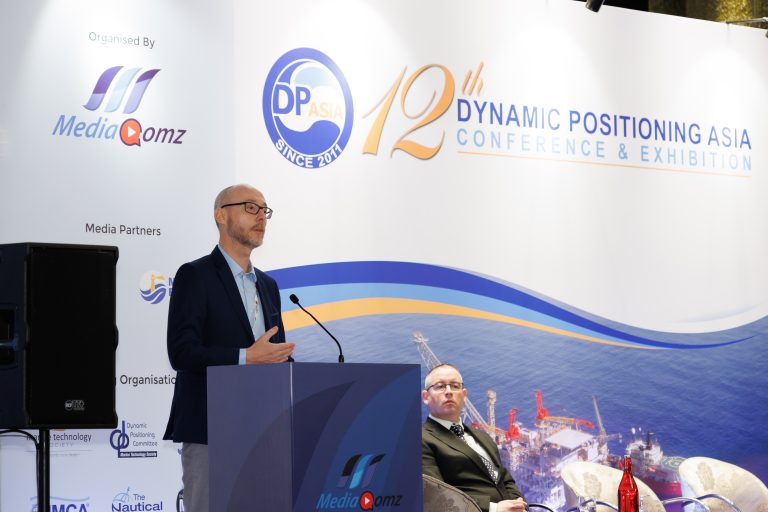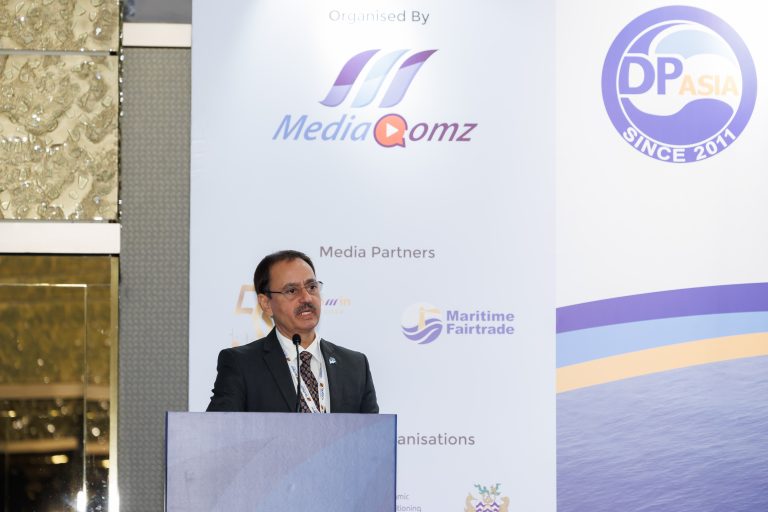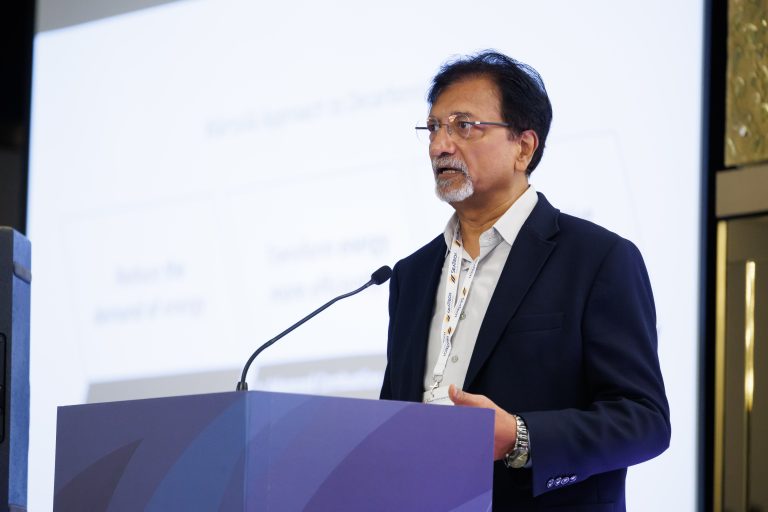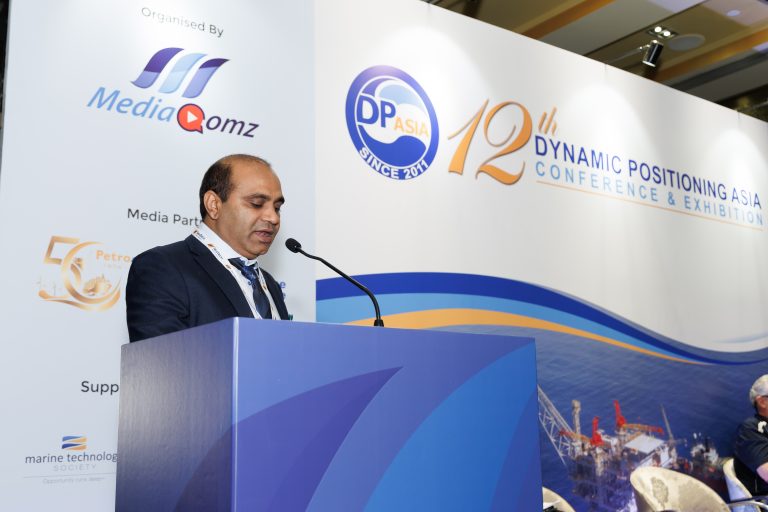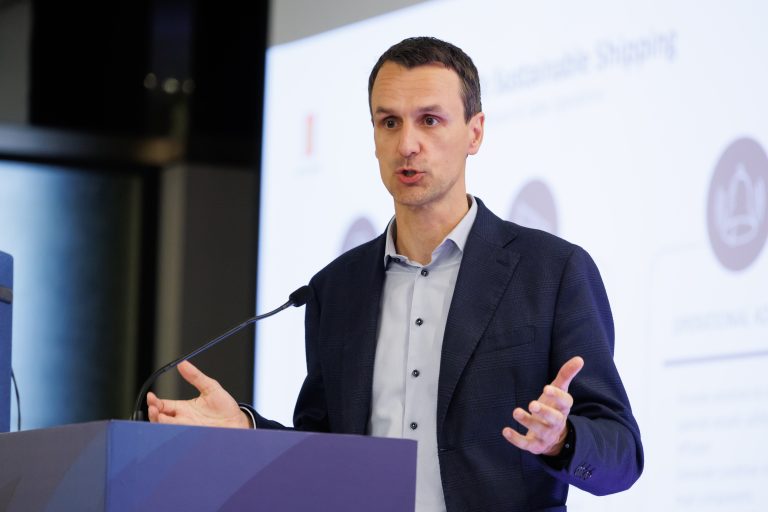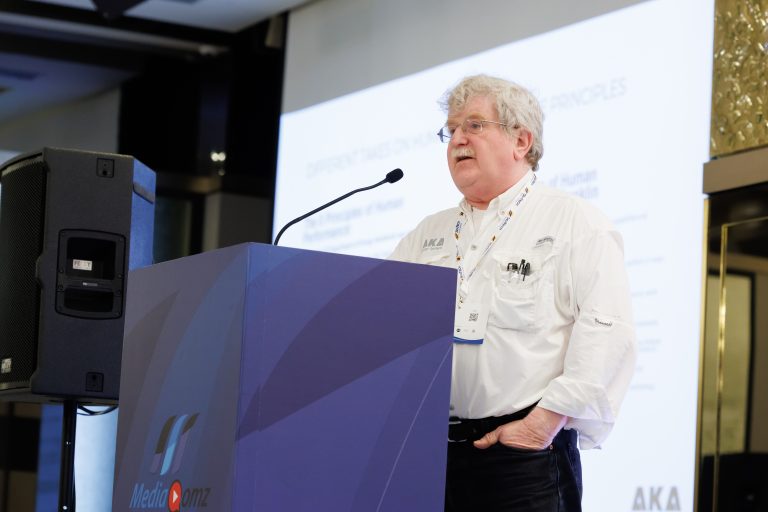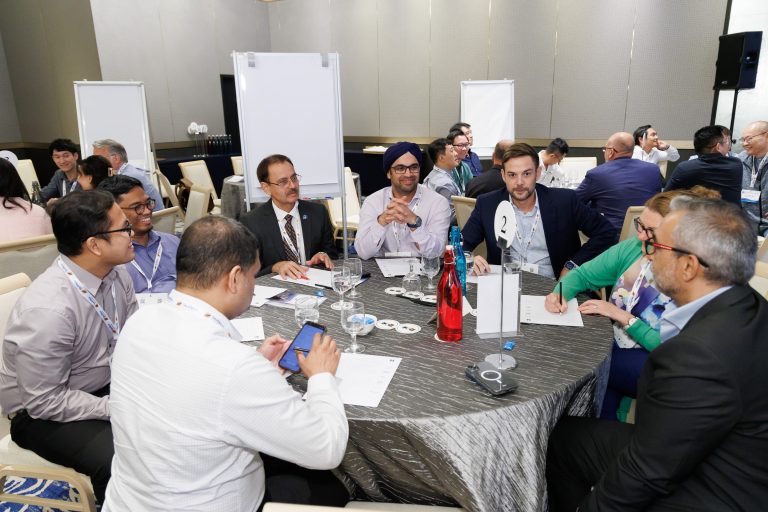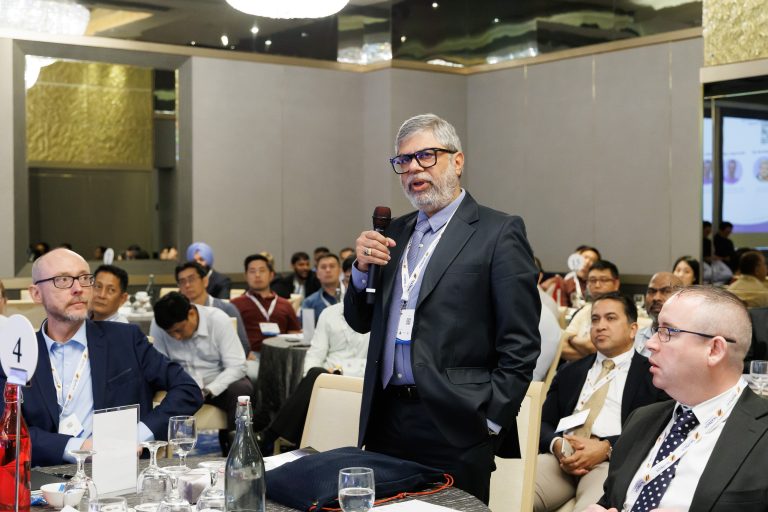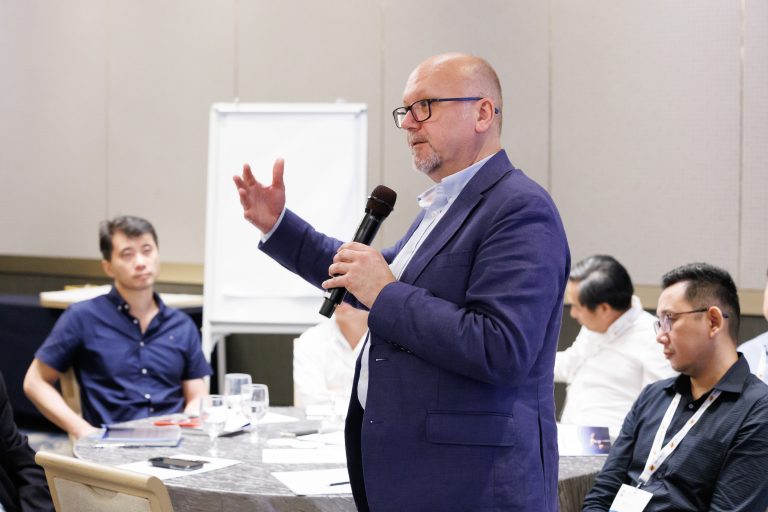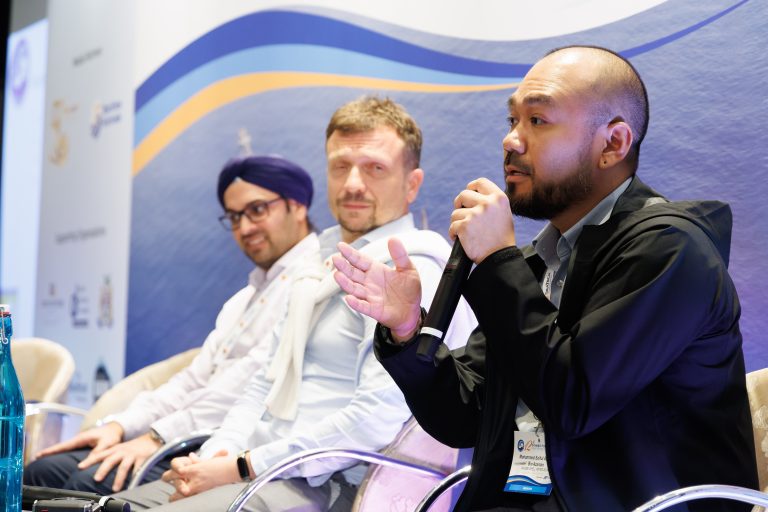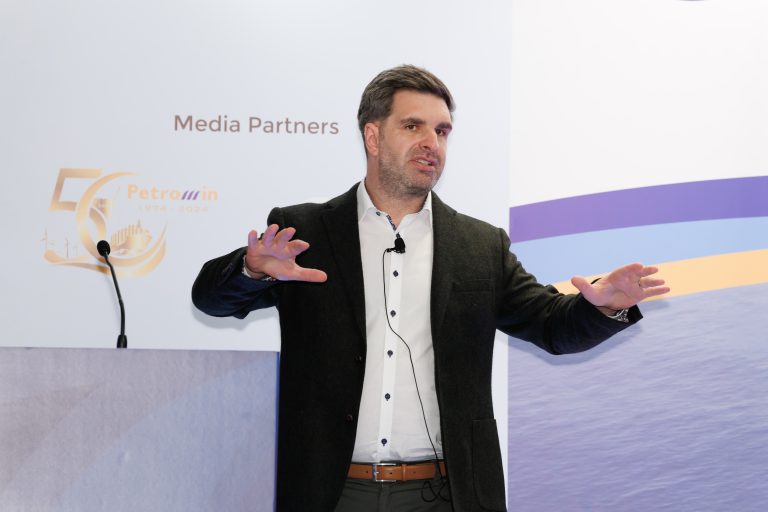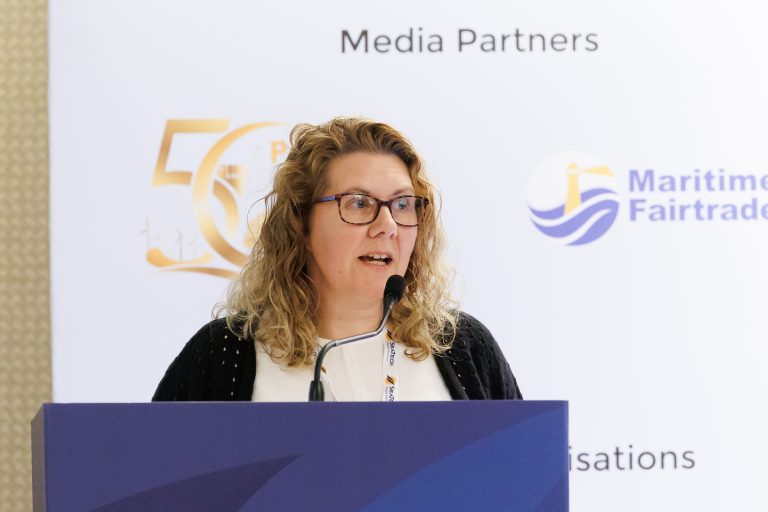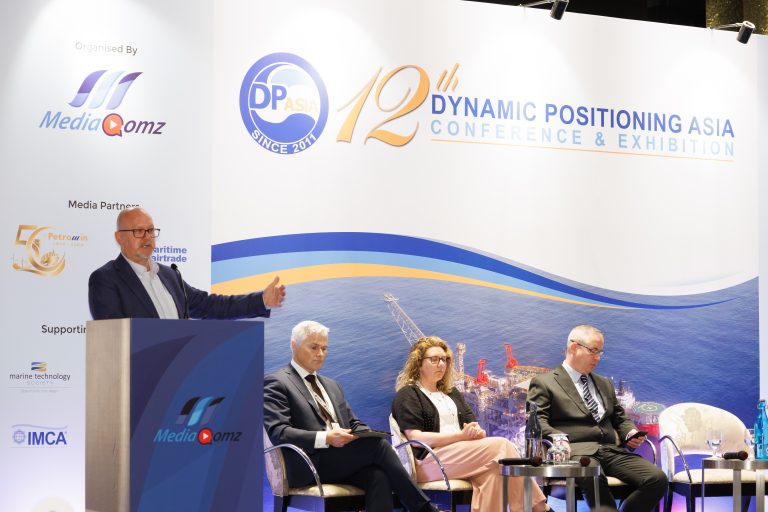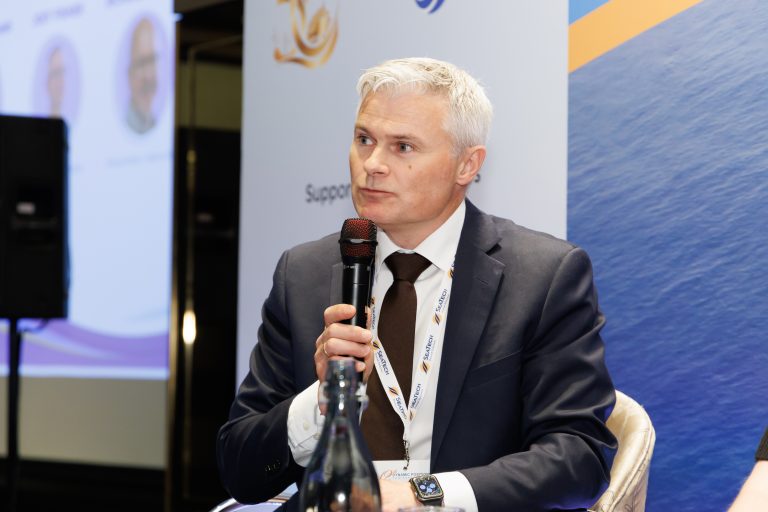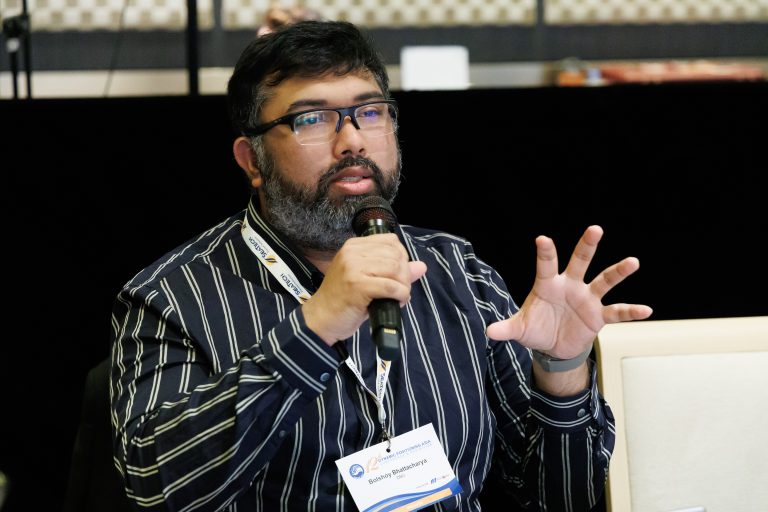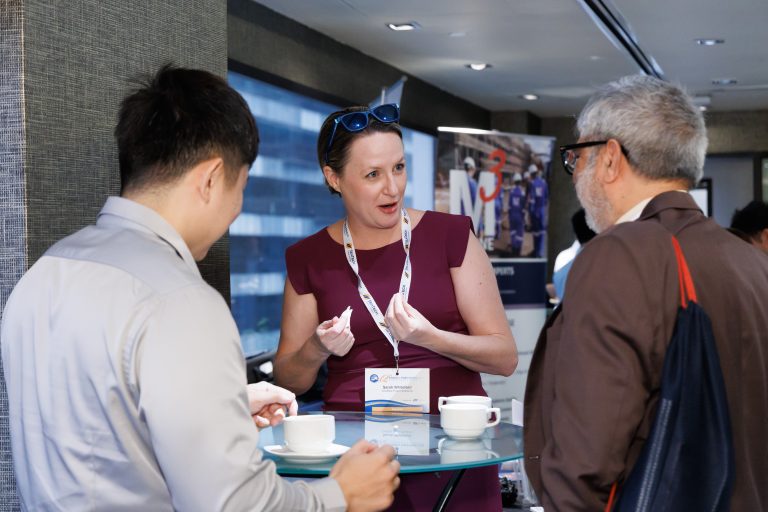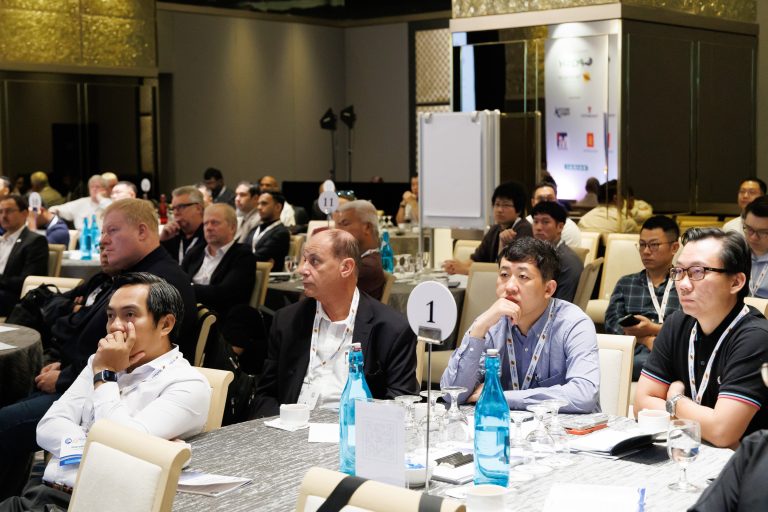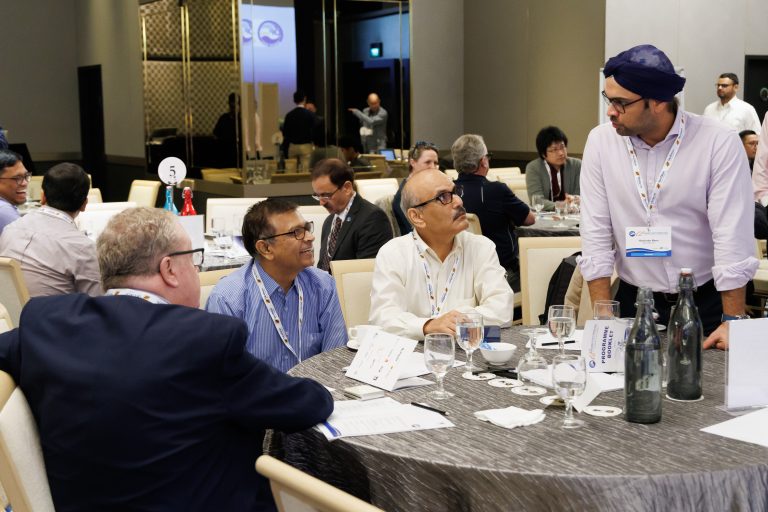Event Recap: 12th Dynamic Positioning Asia Conference & Exhibition
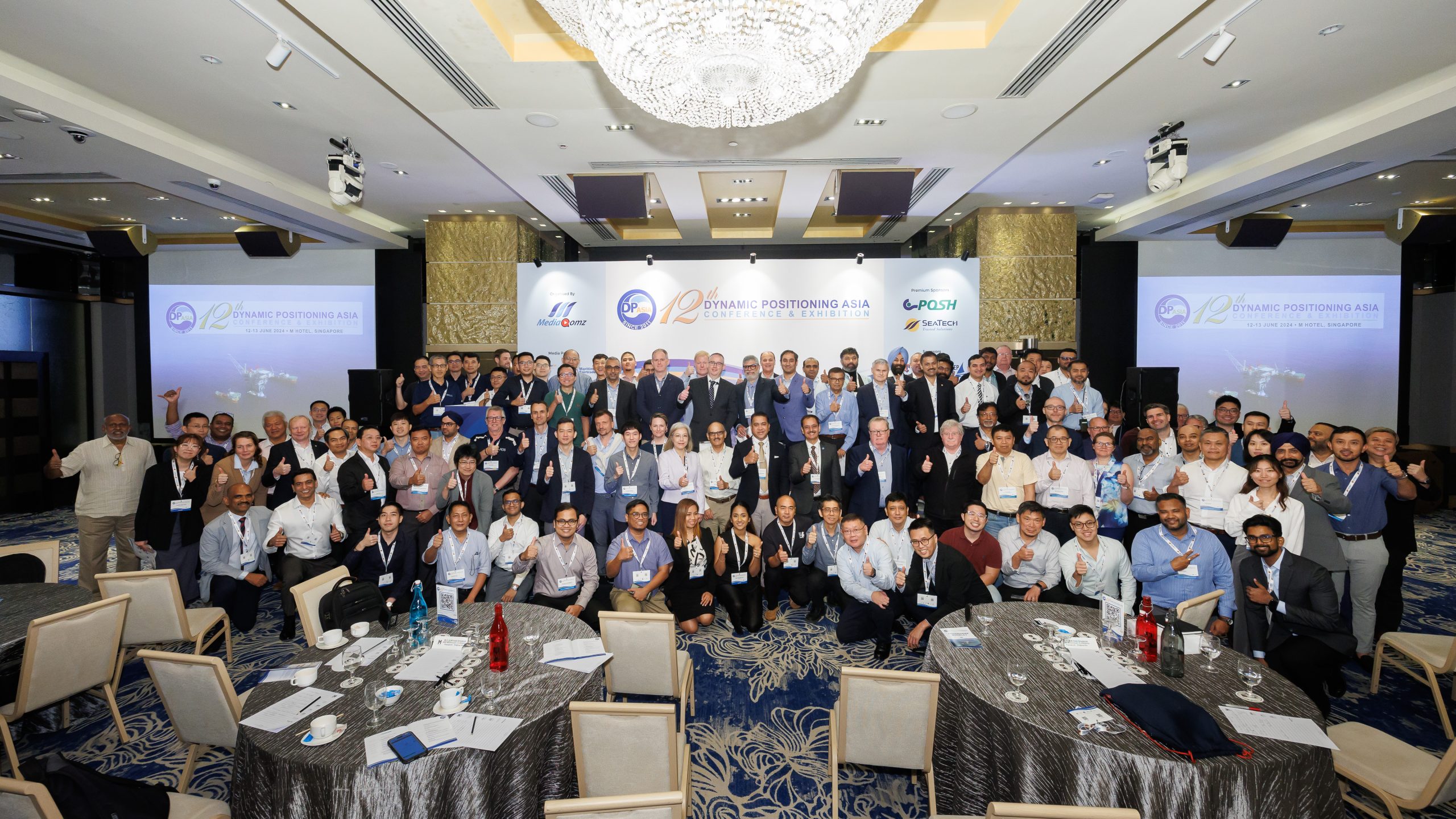
The 12th Dynamic Positioning Asia Conference and Exhibition opened in the Banquet Suite of Singapore’s prestigious M Hotel on 12th June 2024. Boasting a repertoire of speakers hailing from all over the world and more than a hundred delegates in attendance, the conference served as the premier gathering for DP professionals in the region to connect with each other.
Day 1
Session 1
Both new faces and old were present at the event, which was kickstarted by the Conference Chairman Mr. Joey Fisher. In his opening remarks, Mr. Fisher gave a brief introduction of the DP system, outlined the importance of safety measures, and talked about the consequences of loss of position on vessels.
Following that, Mr. Jonathan Boyle of Brunei Shell Petroleum delivered his keynote address on DP operations from client perspectives, concluding with the affirmation that the aspects clients look for in DP systems are mainly safety, reliability, and predictability.
Dr. Surender Kumar, from London-based charity organization The Nautical Institute, then took the stage to discuss life-long learning and career development for professional mariners. His presentation focused on recent updates in the field of training like the DP Vessel Maintainer (DPVM) introduced in April 2021, which has become the industry benchmark qualification with over 750 certificates issued.
Mr. Sanjay Verma of Wärtsilä Singapore then tackled the pressing issue of maritime decarbonisation, outlining Wärtsilä’s comprehensive approach. This approach includes reducing energy demand through innovative energy-saving devices and voyage optimization, enhancing energy transformation efficiency with advanced combustion, hybridization, and electrification technologies, and adopting alternative energy sources like shore power and biofuels.
Session 2
After a brief coffee break, the event continued on with Mr. Glen Hope, who serves as a Dynamic Positioning Operator at Australian Offshore Solutions. Mr. Hope delved into Activity Specific Operating Guidelines (ASOG) and how they can be further optimized as an effective decision support tool. He outlined the problems posed by current guidance documents on DP operations, while also provided suggestions to combat the problem, such as incorporating AI into the system and producing A.S.O.G in an interactive format rather than a document.
Mr. Sandeep Banger from Tidewater Inc. then delivered a presentation on the design, operations, people and processes of Enhanced Ship Follow Mode (ESFM) and Quick Response Follow Target Mode (QRFTM) as viewed from the perspective of a Vessel Technical Operator. He provided several case studies and learnings gleaned from past system failures, concluding with recommendations on optimizing ESFM/QRFTM functionality.
Mr. Stian Jægtvik, Senior Sales Manager from Kongsberg Maritime, initiated a discussion on digital applications such as Data Collector, Operational Insight, and Operational Advisor, highlighting their potential to steer the shipping industry towards sustainability. Additionally, he introduced innovative tools and systems developed by Kongsberg, which serve to facilitate the shift from remote support to smart data in ocean operations.
The session concluded with AKA Energy Systems’ Chief Engineer, Ed Bourgeau, who addressed human performance in relation to the Critical Dependencies Analysis & Redundancy (Identification) Tool, also known as the CDART. He spoke about different takes on the five Human Performance Principle, as well as the four C’s of clarity, consistency, comprehensiveness, and collaboration that the CDART can deliver.
Session 3: MTS Workshop
Following a lunch break where attendees spent time networking with each other, Mr. Suman Muddusetti, Chairman of the MTS DP Committee and the MTS DP Sub-Committee On Guidance and Standards, led a rousing dialogue about ASOG M220 where participants discussed improvements such as language and word choice, engaging in wonderful debates about the various aspects of DP decision support tools, insights to enable human performance, and the top three challenges experienced by the supply chain.
Mr. Scott Moffat, Human Factors Director from People Factor Consultants, gave a fascinating presentation on human factors and non-technical skills as an excellent addition to the technical expertise shared, providing a fresh perspective and a different approach towards DP. Introducing the concept of memory, Mr. Moffat explains that pictures, assumptions and mental models come from past experiences which make up our long-term memory. However, given that people all have separate experiences, it is crucial to understand that everyone views things differently and communication is important to bridge the gaps between perceptions.
Day 2
Session 4: IMCA
On Day 2 of the event, Ms. Jennifer Evans, a Technical Adviser from IMCA started the session off with a presentation on DP event reporting, explaining the three event categories classified by IMCA, including DP incidents, DP undesired events, and DP observations. Her presentation shared an overview of the numbers reported for each event type as well as the trigger points that most often cause DP events, with human, computer, electrical and mechanical factors consistently ranking at the top of trigger trends across the past three years.
Following that, Conference Chairman Mr. Joey Fisher returned to the stage to speak about DP annual trials, the history of their implementation, and understanding rolling tests, findings of test results, and post trial actions. Test findings can be sorted into three different categories: A, for immediate attention; B, for action when reasonably convenient; and C, for future attention or consideration. Mr. Fisher explained what each category entails with the help of a case study, concluding that Category A findings are broadly associated with loss of single fault tolerance or class compliance, while Category B findings are broadly associated with reduction in PFC in a fault tolerant system.
To conclude the IMCA session, IMCA Technical Adviser Mr. Richard Purser gave a presentation on the dynamic positioning community’s role, challenges and opportunities when faced with the emerging necessity of reducing carbon emissions. Mr. Purser also provided an IMO update on STCW, introducing some areas identified for review including digitalisation, mental health, cybersecurity measures and new training innovations. Mr. Purser ended his presentation by informing attendees that there will be multiple complex regulatory changes in the near future, and IMCA will be actively participating in them while supporting its members through the transitions.
Session 5
Session 5 began with Mr. Aleks Karlsen, DNV Senior Principal Specialist for DP Systems. Mr. Karlsen delved into DDV data-driven verification focusing on DP annual trials and remote verification. Instead of traditional class methods that have been reduced in recent years, Mr. Karlsen discussed remote data-driven verification in which crews perform the tests supported by a digital system that ensures data is harvested in the correct tamper-free manner. According to Mr. Karlsen, feedback from surveyors performing digital verification has been mostly positive, though there is room for improvement and several conditions must be met for the highest level of efficiency.
Mr. Bolshoy Bhattacharya, a Marine Risk Service Manager from DNV ES, continued the session with a talk on model based testing in comprehensive verification and validation. Mr. Bhattacharya explained what model based testing is, its application and benefits, how it complements current methods of live testing, and why it is important given the rapid evolution in mindset and technology of the industry. Model based testing, as Mr. Bhattacharya concluded, is safer, controlled, and comprehensive, with the potential to encompass all power, control and safety systems onboard DP vessels.
Afterwards Ms. Sarah Whiteford, Director of Operations & Projects from OneStep Power Solutions Inc., took over the microphone to introduce the use of high quality power monitoring to supplement validation programs. Ms. Whiteford described data-centric evaluation and what it entails; the challenges of secure data acquisition; the process of data is captured, processed and analyzed into actionable information; and finally how that actionable information can be used for system validation, as well as other benefits it can provide.
The final speaker for Session 5 was Mr. Jan Nilsen, Senior Sales Manager/Technical Advisor at Kongsberg Discovery AS SeaTex, whose presentation covered news, challenges, and some possible solutions related to reference systems. The key points of Mr. Nilsen’s talk included new signals and services in global navigation satellite systems (GNSS), threats against safe GNSS operations, ways to counteract GNSS interference and jamming, and the challenges or advantages that come with target-based systems versus targetless systems.
Session 6: MTS Workshop
For the last workshop session of the event, which took place after a lunch break, Mr. Aleks Karlsen and Mr. Suman Muddusetti teamed up to deliver a joint DNV and MTS DPC Keynote to Workshop on novel approaches to address new challenges. For example, complex dilemmas can be solved through collaboration between MTS and DNV in the form of Joint Development Projects like the DP System Integration (DNV RP 0684), MTS contributions to DNV projects (DNV RP 0591) and even contributions to IMCA M220. Given the importance of collaboration in the industry, fostering a sense of community is essential in the pursuit of delivering incident-free DP operations.
To cap off the final few hours, Mr. Bolshoy Bhattacharya and Mr. Aleks Karlsen returned to the stage with Dr. Steven Cargill, DPTA Vice President of Marine Risk, Energy Systems at DNV, to lead an MTS DP Committee Workshop Session. Attendees were encouraged to split into tables and hold discussions to answer questions about various aspects of Evidence Based Comprehensive Verification and Validation (EBCV²), such as the EBCV² flowchart, its roles and responsibilities, and its definitions.
As it promises every year, the 12th Dynamic Positioning Asia Conference & Exhibition was a resounding success bolstered by incredibly knowledgeable speakers, wonderful attendees from all over the world, and the sharp expertise of the Technical Committee members. We are proud to host such riveting discussions, foster connections between industry professionals, and help to build a like-minded community in the Dynamic Positioning scene.
 Skip to content
Skip to content



